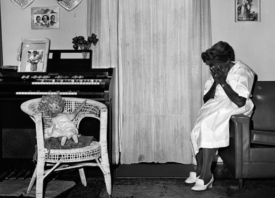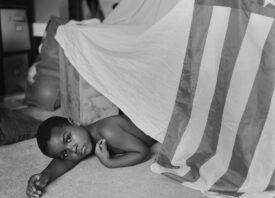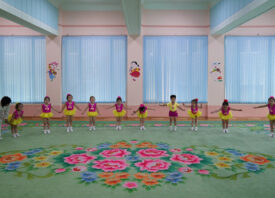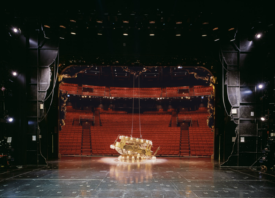Search this site
Inside the U.S. Military’s Uncanny “Theater of War”


In the summer of 1994, Chris Sims spent a summer in college working for a migrant farm worker labor-organizing project. Among his many duties was making photographs used for various publicity campaigns, a job that took him into spaces he wouldn’t have otherwise seen.
“That showed me how a photograph could be a tool for our organizing efforts, a historical document, evidential material, and art at the same time. I think that’s when I knew this was the form I would aspire to work in,” Sims says.
While serving as an archivist at the U.S. Holocaust Memorial Museum, Sims worked with a variety of people doing research including survivors and their family members, U.S. military veterans, historians, documentary filmmakers, seventh graders doing history projects, and actors learning more about the back story of a character they were portraying.
Over a period of two years, Sims began to recognize the scope of the archive of some 80,000 images, and began to recognize that event within the world’s largest extant collection, photographs or documents of critical importance were missing. “Those images were either not saved after the war or were not made in the first place,” he says.
“In some cases, only a handful of photographs remained to represent a particular location or a specific wartime event—a shtetl in pre-war Poland or the Warsaw Ghetto Uprising, for example—and those pictures were often sourced from German military photographers. Faced with not being able to respond fully to so many of these research requests, that I truly knew what was missing, in every sense of the word.”

That experience became a foundational event in Sims’s life. “Today I think of my projects as an artist who is working with the perspective of a photo archivist – thinking ahead to a war photography archive in 50 years and anticipating what gaps there would be in that archive, and seeking to anticipate and eliminate critical gaps in the record,” he says.
“Whenever I am seeking direction in my work, and when the next steps appear uncertain, I always return to this metaphor of the archive. I am compelled to create as complete an archive as possible of the manifestations of war in the quiet and uncanny details of our collective experience.”
With this understanding Sims set forth to create Theater of War, an extraordinary document of the pretend villages used for U.S. military training wherein soldiers engage with newly arrived émigrés from Afghanistan and Iraq in mock battles. Getting into character, Sims also played the role of a journalist from a fake news agency, allowing him even deeper understanding of war games in the new millennium. In conjunction with the recent publication of The Pretend Villages (Kehrer), Sims reflects on what he has observed making this body of work.

What was the inspiration to create Theater of War?
“I spent some time at Fort Bragg in Fayetteville, North Carolina, on a separate editorial story in 2004–2005. As opposed to the college towns I was living in at the time, when I was in Fayetteville, there was a collective and resonant sense day-to-day of a country being at war. So I returned again and again and did a few smaller projects on the base.
“As we were wrapping up one day, the young U.S. Army private who was tasked with driving me around and making sure I didn’t get into trouble asked me why I was photographing the things I was photographing (which he found incredibly boring). He said there were much more interesting things to see on the base, and drove me through one of the pretend villages as we were heading out.
“I knew fairly quickly this was a perfect project for me as it offered a way to document not just a place, but also a mindset: what did Americans think these distant lands and cultures where we were fighting were like? How are these wars present in our own day-to-day lives in the United States? Who do we believe to be our “enemy,” and how do we imagine their lives? And how are these twenty-first-century wars, and our military’s preparation for them, hidden and not seen by US citizens, in a democracy?”

Could you speak about the experience of being at these US Army bases and what it was like to be in these fictitious Iraqi and Afghan villages that serve as training grounds for military personnel?
“The villages serve as strange and poignant way stations for soldiers headed off to war, and for people who have fled from it. U.S. soldiers and marines interact with ‘cultural role-players’ who are often recent immigrants from Iraq and Afghanistan, including some who worked with U.S. troops in those countries. Additional role-players are drawn from nearby cities and towns who have now found gainful work playing the part of ‘extras’ in this constructed world and who represent a new and surging sector of civilian employment by the military post-9/11. While American troops have long used simulations to improve operational readiness, these villages represent changes in the strategy of victory—an emphasis on cultural competency rather than heavy artillery.
“During the month-long training rotations, there are typically a half-dozen or more villages staffed with up to fifty role-players each. When they are not directly engaged in training exercises during their twelve-hour shifts in the villages, the role-players decorate and otherwise modify their temporary surroundings, creating architectural spaces that are layered visions of Western and Islamic world views. The role-players are given wide latitude in inhabiting their characters and bring an impressive range of skills, activities, and traditions to their work. The overall effect of the villages is convincingly accurate and sometimes comically misdirected, mundane, or nightmarish.”

Can you speak about what it was like to participate, playing the role of war photographer for the “International News Network” and how this vantage point gave you greater understanding of the experience?
“The pretend villages are located on different bases throughout the country. Most of the time, I would be granted access through the military’s public affairs offices. But one time, I replied to a call for participants to be journalists for the ‘International News Network’ at one of the bases. Since there was “real” media on the real battlefields, they also wanted ‘pretend’ media in the training grounds.
“Most of the work involved hounding generals with obnoxious questions at ersatz press conferences in the villages. Sort of like in the Stanford prison experiment, I rather quickly grew into the role. In exchange, I had the ability to hitch rides around the training area and go into and photograph places I had never been able to access before.
“One day, in an image that is forever burned in my mind, we can to a building and threw open the doors: inside, like the final scene of Raiders of the Lost Ark, was a huge store room, but instead of artifacts or wooden boxes, there were thousands of cans of Surge, a discontinued Mt. Dew-like soda that apparently Coca-Cola or someone had donated en masse to the military and would seemingly fuel the villages for decades to come.”

Lastly, can you speak about the idea of theater, role-playing, and performance, and importance of creating faith in fiction to mold the ideal soldier?
“Philosopher and semiotician Roland Barthes wrote in Camera Lucida (1980), along the same lines of Harun Farocki’s sentiments,’Ultimately, Photography is not subversive when it frightens, repels, or even stigmatizes, but when it is pensive, when it thinks.’ To make my photographs think, I attempt to render the familiar strange; this places my work in a modernist tradition utilizing techniques such as those described by Russian/Soviet literary theorist Victor Shlovsky as ‘defamiliarization’ (ostranenie) and German playwright Bertolt Brecht as ‘the alienation effect’ (Verfremdungseffekt).
“The common thread in these techniques is the work of laying bare the devices of representation and making plain the hidden machinery at work. The military’s own use of theater in the pretend villages reveals this to us. My goal, then, is to generate interest in a fresh, uncanny, strange, or seemingly unreal photograph of a ‘known’ concept — military training — and to use that interest to generate renewed attention to fundamental questions, such as what we ask of young people, or to what the current costs, solutions, and machinery of war look like, to fundamental questions like why we are in these wars, and what the consequences may be.”

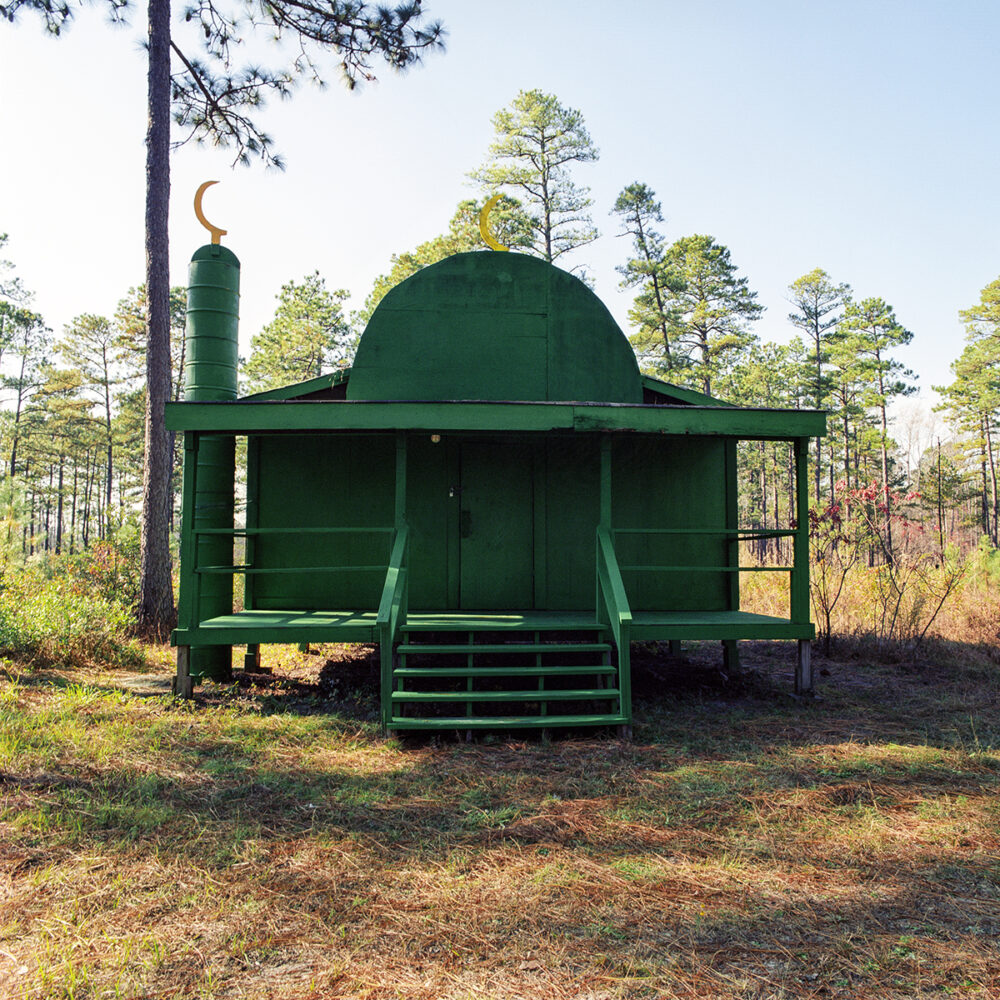
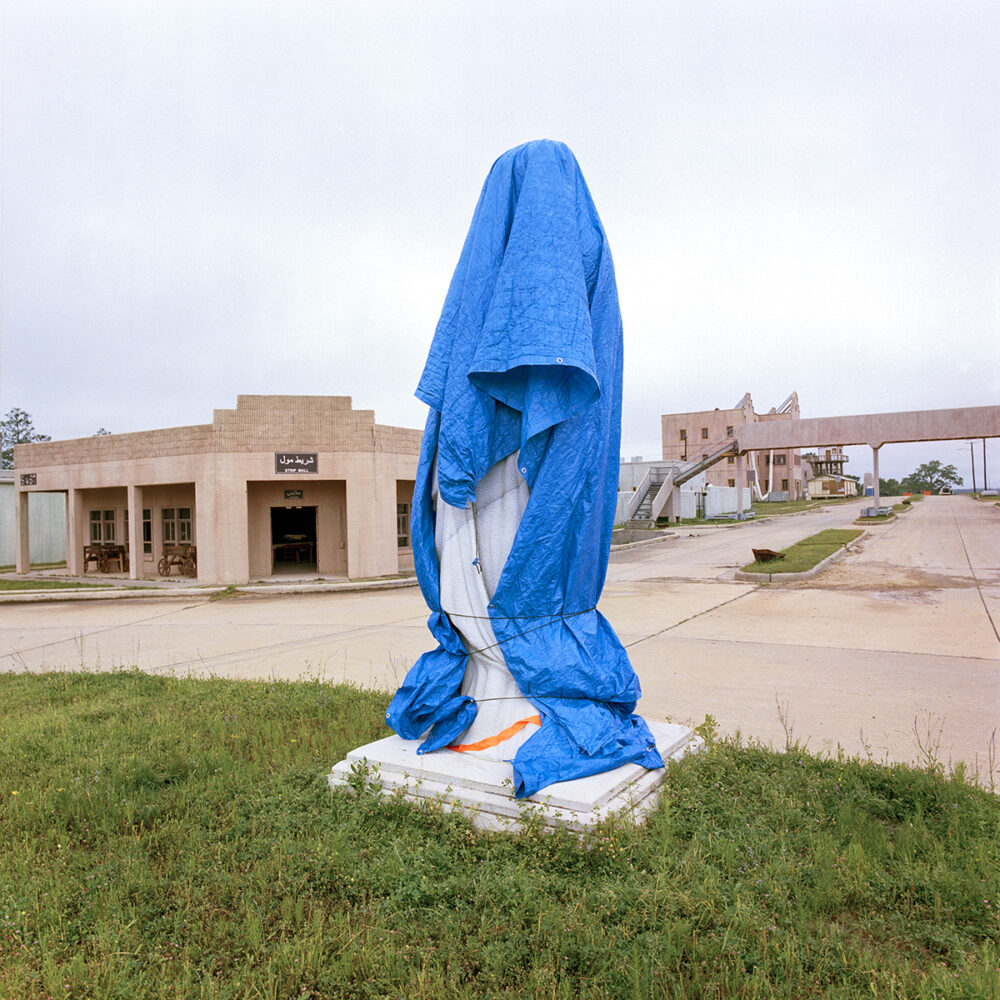
All images © Chris Sims.
